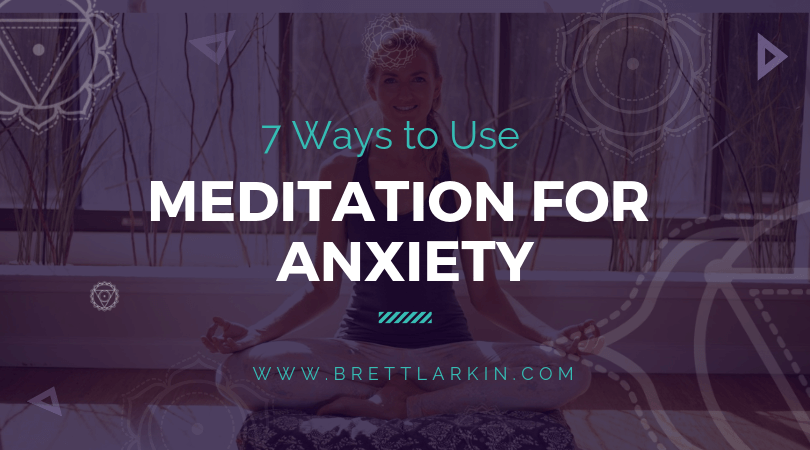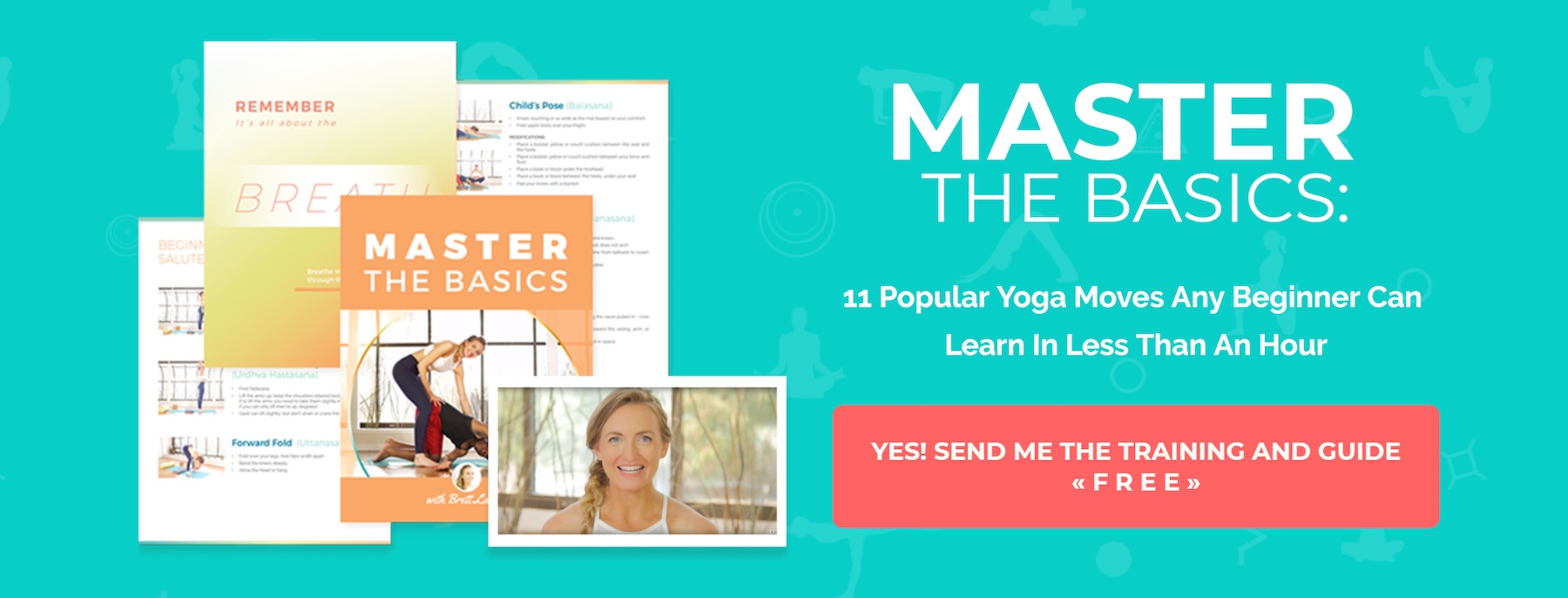
Hey, you.
Are you freaking out right now?
It doesn’t matter why.
If you are wracked by anxious thoughts, sky-high stress levels, or are breathing like you’ve just outrun a real-life Texas Chainsaw Massacre, listen to me.
It’s all going to be okay.
(Allow me to repeat that.)
It’s all going to be okay.
Perhaps you are a seasoned meditator seeking new tools to look after your mental health.
Or, more likely, you are turning to meditation in the same way as someone who has just fallen off a cruise ship might turn to an orange nylon life ring.
That is totally fine.
Meditation is the perfect antidote to anxiety.
If you’ve ever experienced an attack of anxiety and stress, you’ll know that deep relaxation is the best way to shift your central nervous system out of not-fun, high-tension “fight or flight” mode.
However, a regular meditation or mindfulness practice is also a beautiful and highly-effective way to treat your stress disorder or anxiety and depression, minimizing your chances of an anxiety attack in the first place.
How To Deal With Anxiety Using Meditation
So, how does it work?
If you are ready to open the trapdoor beneath anxious feelings, negative thoughts, and a fear-trapped mind, feel free to skip to the guided meditation for anxiety below.
But if you have the time, take a moment to consider how your body and mind react when you are stressed or anxious.
How does your mind feel? What happens to your breath? Do you notice any change in your pulse or heart rate? What about your body’s temperature?
When you are caught in the throes of an anxious experience, where does your consciousness reside? In other words, are you allowing yourself to react immediately to every thought and emotion that is presented by your subconscious mind?
Most likely, the answer is ‘yes.’
When we are stressed, either in a moment of extreme tension or in a lifestyle of constant, low-grade activation of our body’s stress responses (looking at you, Western society!), we lose something critical.
Something that is integral to our short-term happiness, ability to focus and enjoy the present moment, and perhaps even the evolution of our species.
We lose the gap between our thoughts and our consciousness.
When we remove this small, but very real gap, we learn to believe that we are no different from our thoughts and emotional state.
Contemplate that for just a second.
Guesstimate how many thoughts run through your mind in a day. Heck, in an hour.
(“Gosh, I’m running late to work. Should I eat a sandwich for lunch? Is my bra strap showing? If I take up jogging tomorrow morning, how long till I don’t suck at it? I wonder if that guy knows how much he looks like Guy Fieri.)
Sound familiar?
Imagine believing in your heart of hearts that you are that jumble of over-caffeinated insanity.
Then, accept the fact that you probably do.
If you are like most people, chances are you’ve allowed yourself to forget that there is a consciousness, an observer, of the mindless chatter that we fill our brains with.
This is the key to using mindfulness to relieve anxiety.
If you can practise the subtle art of locating, maintaining and residing in that gap between conscious mind and the chaos of the world around you, you can live happily, centered, and free of anxious feelings.

7 Meditation Techniques for Anxiety
Here’s how to do it.
Find a quiet place if you can. Remove any constrictive clothing and take a seat.
Allow yourself to browse these different meditation techniques until you have found one that speaks to you presently.
Then, settle in and simply try it.
You can’t discover if a deep relaxation or mindfulness meditation method works for you unless you actually meditate.
So, get meditating!
1. Try a Simple Moving Meditation
Sometimes you just feel too overwhelmed to sit still and meditate.
If you scoff right now at the notion of emulating Buddha seated with eyes closed on his lotus flower, don’t fret.
Follow along with this Grounding Meditation for Anxiety designed for beginners, empaths, and those who experience panic attacks.
This 10-minute guided meditation uses the whole body to relax the mind. Using a few rounds of guided breathing exercises, some calming movement to regulate your blood pressure, and a few brief moments of peaceful silence, you can shift your present state to relaxation.
2. Get Grounded
This 15-minute meditation and mindfulness practice will take you on a journey through your three lowest chakras to plug your awareness into the supportive energy of the Earth.
Whether you are connected to your chakra system of subtle internal energy or not, you can reap the rewards of this stress reduction exercise.
Notice how you feel as your body rests on the Earth and use guided breathing to visualize sending your breath all the way from the crown of your head deep into the fiery core of the planet.
Allow the fire to incinerate anything that does not serve you, including the symptoms of depression or anxiety disorder.
3. Let Anxiety Float Up, Up, and Away
Unlike grounding mindfulness techniques, this meditation helps you let go of mental strife in the other direction:
By sending it up and out through the crown of your head.
This Easy & Quick Meditation for Stress Relief and Anxiety will allow you to release negative thoughts, tension within your subconscious mind, and worry about people around you by tapping into the central channel of energy in the body and using its power to move anxious energy within you.
4. Learn to “Downshift” Your Anxiety Levels
If you have a bit more time, try this 18-minute Guided Meditation for Anxiety and Obsessive Thoughts as a treatment for signs and symptoms of any struggle from a panic disorder to an anxiety attack to separation anxiety to obsessive-compulsive disorder.
Downshifting works to control patterns of thinking that can spiral into fear and anxiety by helping you tap into the physical symptoms and sensations of an overactive mind and funnel that energy into lower regions of your body.
In other words, shifting the feelings of anxiety down and out of your head, allowing you to connect with the stability of your physical body and the nurturing emotions of your heart.
5. Overcome Fear Using Meditation
At the root of many a generalized anxiety disorder or mental illness is an unhealthy relationship with fear.
Fear is not inherently evil; it keeps us safe, teaches us our physical and mental limits, and allows us to recognize what is most important to us in our lives.
However, it is when our brain latches onto that fear that we allow the basic emotion to control our lives, turning us into a society of anxious people.
If this problem sounds related to the root of your struggle with anxiety, try this Guided Meditation For Releasing Fear.
Learn to accept rather than shy away from anything that haunts you with this guided visualization journey. Embrace your own inner lightness and darkness, and find harmony and happiness with meditation for fear.
6. Breathe Away Your Panic
Breath practice is one of the most effective methods of managing anxiety naturally.
What’s more, you can reduce stress and incorporate breathing strategies into your daily life by practicing first thing in the morning, creating a mindful habit with your kids, or using these techniques to unwind before sleep.
This 15-minute Meditation for Anxiety & Nervous Energy is mainly focused on mindful breathing. Breathing meditation is a perfect form of meditation for anxiety symptoms because it helps calm down the body and mind responses to anxiety depression simultaneously.
So no matter how non-meditative your mind may feel, you can still go about practicing mindfulness.
7. Simply Sit in Silence
This is the most straightforward meditative practice.
But that does not necessarily make it the easiest form of stress management.
It can be difficult and not-so-calming to sit down and try practicing meditation in silence when it feels like Mardi Gras and a death metal concert are concurrently headlining inside your brain.
If that’s the case, try one of the guided meditation techniques for anxiety listed above to wrangle your internal chaos.
But if you are ready to try meditation mindfulness without the anchor of a teacher’s voice, then dedicate a few extra moments to finding a way of sitting that is right for you before you dive into mindfulness and meditation.
Once you’ve determined the meditation seat that serves you most, close your eyes, turn your awareness to your breath and the sensations of your body, and rest in this stillness.
Final Words
Please note that while medical professionals increasingly point toward meditation as a treatment for anxiety and depression, as well as perhaps the most powerful tool for stress management, this article is not meant to replace medical advice.
Allow the breathing techniques and relaxation exercises found in these videos to introduce a meditative practice to your life. These techniques can be used when working, running errands, or traveling to check in on your mental health even when you don’t have a moment to sit and meditate.
Then watch your anxiety slip away.
Next Steps
- Check out my YouTube channel and find some yoga classes that you can try out for yourself!
- Download my Yoga Calendars for an at-home practice, guided by me on YouTube!
- Join Uplifted for exclusive content that you can access right from the app. Take a deep dive into your practice with me this year!

Learn how to do 11 of the most popular yoga poses correctly. Free video + PDF download.

Find more yoga sequences by benefit.
YOU MIGHT ALSO LIKE
- How to Teach Somatic Yoga: A Practical Guide for Instructors
- The Best Somatic Exercises for Grief: Find Healing Through Movement
- The Best Somatic Exercises for Anger Management and Emotional Release
- Authentic Pathways: Connecting With Higher Self for Inner Peace
- Yoga to Reconnect with Yourself: 5 Essential Practices for Inner Peace
- Yoga for Connection: 10 Poses to Deepen Relationships and Bonding
- Yoga To Connect With Your Body For Mind-Body Harmony
- Yoga to Connect with Feminine Energy: 5 Transformative Practices
- Yoga to Connect with Your Heart: 3 Poses for Emotional Balance
- Myofascial Release Yoga: Unlock Tension and Improve Flexibility
- 6 Hip Openers For Emotional Release
- Office Yoga: 10 Poses You Can Do Right Now
- Ayurveda Food Combining: The Key to Balanced Digestion
- Yoga For Grief: 8 Yoga Poses For Support
- Yoga for Vata Dosha: Practice Poses and Tips








